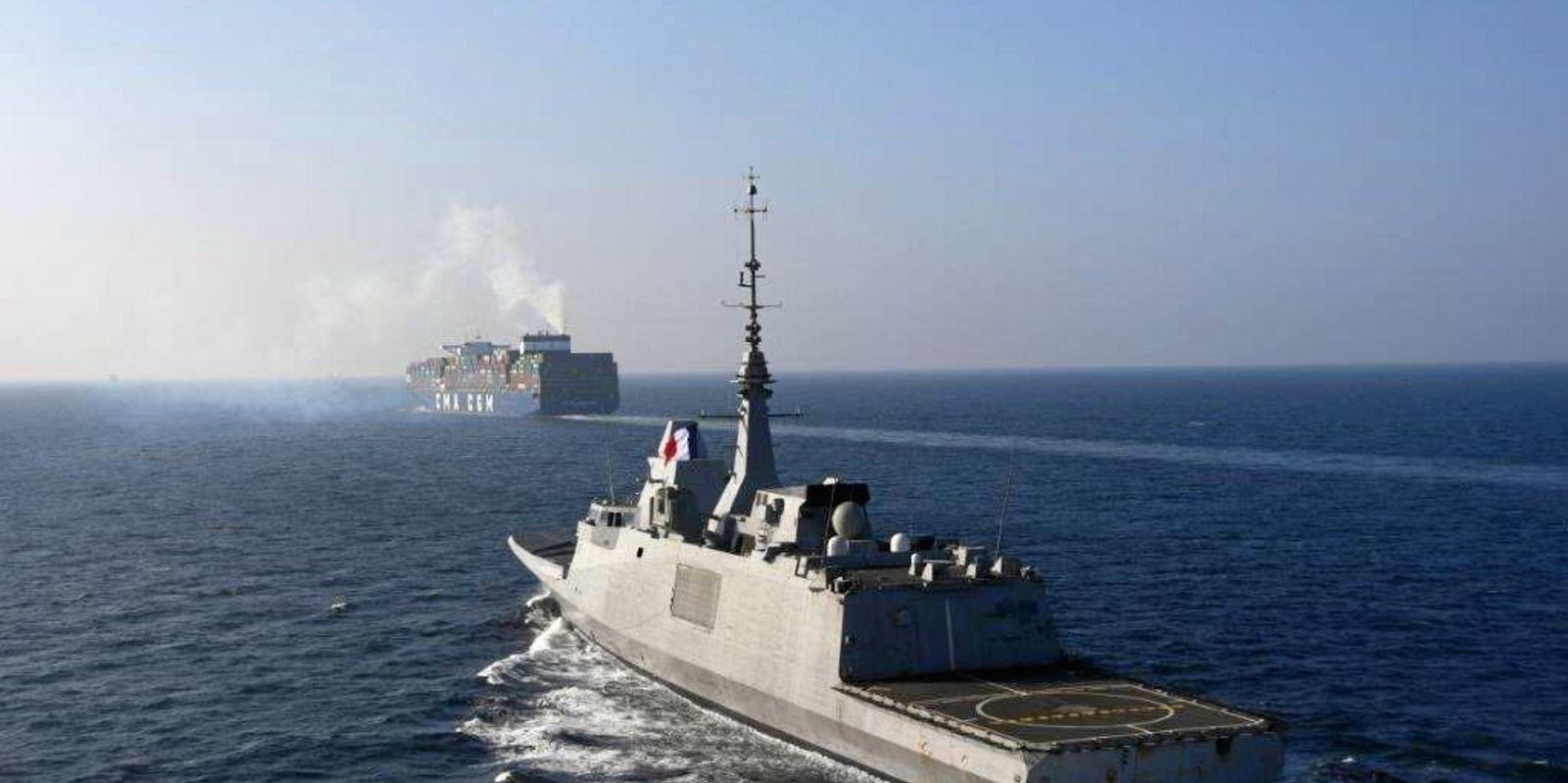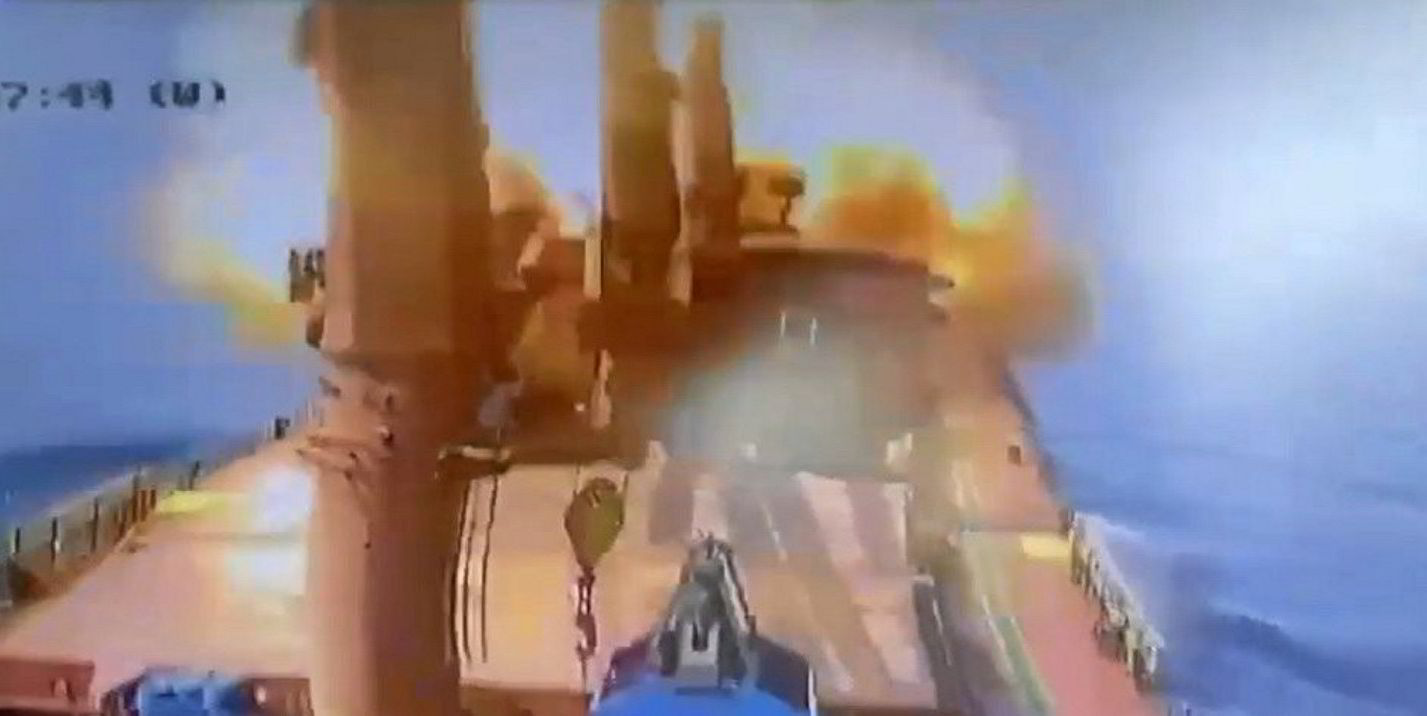For the second time in the span of just a few days, rare and dramatic images emerge depicting the nature and impact of Houthi missile and drone attacks against commercial vessels sailing off Yemen.
Late on Friday, Greek television station Skai aired a 16-second video taken from the bridge camera of the 56,900-dwt Zografia (built 2010) at exactly the moment the bulker was hit.
The incoming missile is visible when freezing the video from Skai TV in its fourth second.
As TradeWinds reported, the missile caused no injuries or serious damage and the Greek-owned ship continued its journey.
The Zografia footage emerged just one day after the Indian Navy released rare images of a Houthi drone impact on another bulker recently attacked in the region — the US-owned, 55,300-dwt Genco Picardy (built 2005).
The strikes on the two vessels highlight how tenacious the Houthis are once they have picked a target.
Both the Zografia and the Genco Picardy were attacked twice in the span of just a few hours.
In the case of the Zografia, the first attack happened early on 16 January, when a small craft approached the Vulkanus Technical Maritime-owned ship about 44 miles (81 km) northwest of Mocha, Yemen.

The craft abandoned the approach following evasive manoeuvres by the vessel amid warning shots fired by its armed guards.
The Houthis, however, reverted later in the day by firing a missile at the ship as it was sailing further north, about 76 miles north-west of al-Saleef, Yemen.
The Genco Picardy was attacked first by a drone that hit it on its port side at about 20:30 local time (17:30 GMT) on 16 January.
Houthi drones targeted the Genco Picardy once again, without hitting it, on 18 January, as the Genco Shipping & Trading vessel was continuing its journey in the Gulf of Aden with minor damages.
Another far more serious twin Houthi attack took place on 30 December, when a missile launched by the Iran-backed group hit the 15,300-teu Maersk Hangzhou (built 2018).
One day later, four small Houthi boats approached the AP Moller-Maersk ship and tried to board it, getting within 20 metres of it.
US Navy helicopters called in to assist opened fire on the Houthis, killing 10 of their fighters.
Brinkmanship in Washington and Sanaa
The US and the UK have responded to such attacks by beginning their own bomb and missile strikes against Houthi targets in Yemen on 12 January.
Western strikes intensified this week, with US Central Command (Centcom) reporting on 20 January the third wave of attacks in as many days.
According to two Centcom statements issued separately on Saturday, a total of four Houthi anti-ship missiles were destroyed, just as the group was preparing to launch them in the direction of the Red Sea.
US and UK air strikes, however, do not seem to have reduced the Houthis resolve or capacity to continue their campaign.
In combative statements made in a televised speech on 18 January, Houthi leader Abdul-Malik al-Houthi said his group would continue targeting Israeli, US and British ships in the area.
“We are directly in a war facing the US, the UK and the Israelis — this does not scare us and we thank God for this blessing,” he said.
The Houthis began attacking commercial shipping in mid-November to pressure Israel and its Western backers to ease their relentless war against the Palestinian Hamas group in Gaza.
Israel invaded Gaza in response to a brutal raid by Hamas fighters against Israeli towns and villages on 7 October.
The Houthis’ stated targets are ships owned by Israeli interests or trading with the country, as well as vessels tied to the US, the UK or any nation supporting military action against Yemen.

“The Americans want the sea to be safe only for those giving support to [Israel],” al-Houthi said.
In statements made on 19 January, US President Joe Biden said he would not back down either.
Asked by journalists whether US bomb strikes against the Houthis ‘were working’, he said: “When you say ‘working’, are they stopping the Houthis? No. Are they [the US strikes] going to continue? Yes”.
The Houthi attacks have led major container liners and an increasing number of tankers and bulkers to avoid the region, rerouting ships around Africa instead.
According to the latest Clarksons figures released late on 19 January, total ship arrivals to the Gulf of Aden are now 65% below 2023 levels.
Disruption is biggest for boxships and gas carriers, which are down a staggering 90%. Tankers, which were initially unaffected, are now down 45%. The same goes for bulkers, the arrivals of which have dropped by about 30% from 2023 levels.




